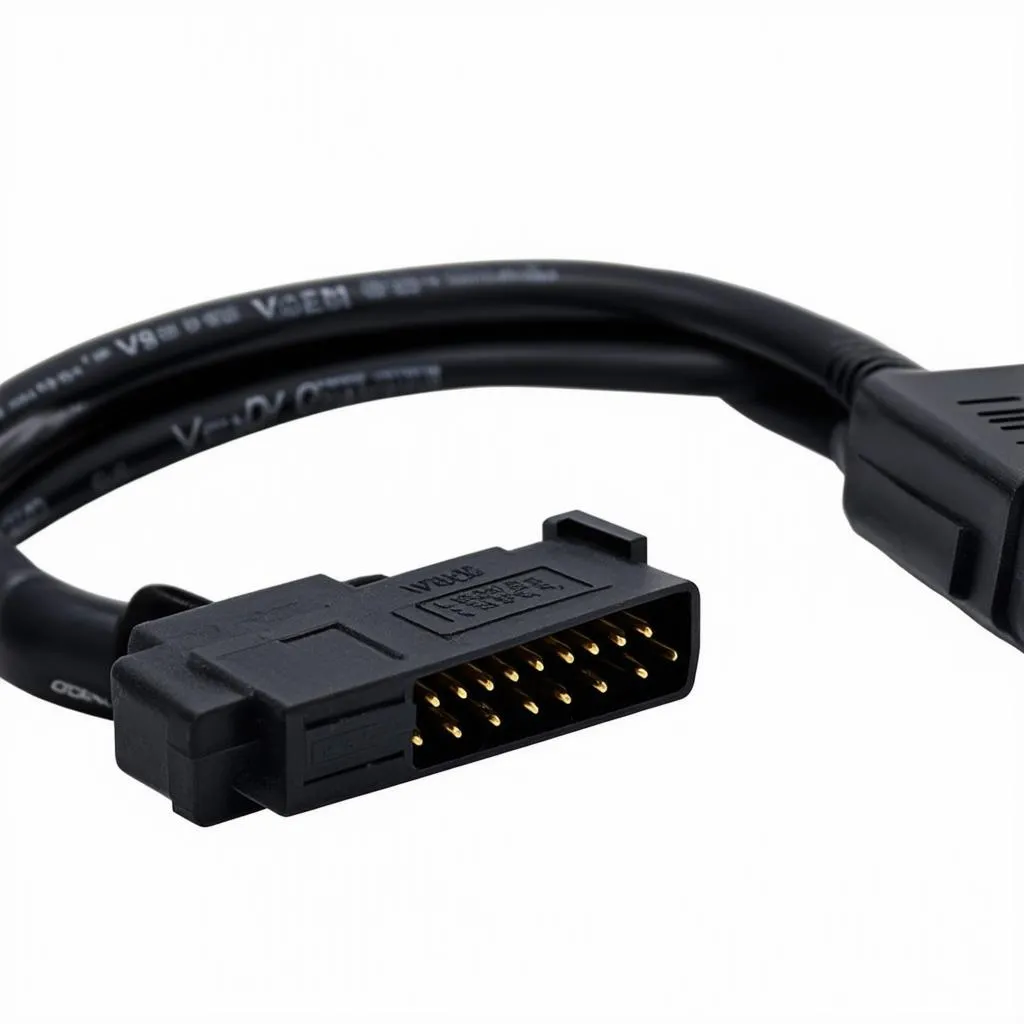The dreaded “check engine” light can be a source of anxiety for any car owner, especially when accompanied by a cryptic code like “00797” in your VCDS scan. This guide aims to demystify VCDS code 00797, providing you with the knowledge to diagnose and potentially fix the issue. Whether you’re a seasoned mechanic or a car enthusiast, understanding this common fault code can save you time, money, and unnecessary headaches.
What does VCDS Code 00797 Mean?
In the world of automotive diagnostics, VCDS (Vag-Com Diagnostic System) reigns supreme for Volkswagen Audi Group (VAG) vehicles. The code 00797 specifically points to a malfunction within the intake air temperature (IAT) sensor circuit. This sensor plays a crucial role in engine management by informing the Engine Control Unit (ECU) about the temperature of the air entering the engine. The ECU uses this data to optimize the air-fuel mixture for optimal combustion and performance.
 VCDS Code 00797 – Intake Air Temperature Sensor
VCDS Code 00797 – Intake Air Temperature Sensor
Symptoms of Fault Code 00797
A faulty IAT sensor can manifest itself in several ways, impacting your vehicle’s performance and drivability. Here are some common symptoms associated with VCDS code 00797:
- Illuminated Check Engine Light: This is often the first and most noticeable symptom.
- Rough Idling: The engine may idle erratically due to an incorrect air-fuel mixture.
- Increased Fuel Consumption: A rich fuel mixture caused by inaccurate IAT readings can lead to decreased fuel efficiency.
- Hesitation or Stumbling Upon Acceleration: The engine might hesitate or stumble when you press the accelerator pedal.
- Black Smoke from the Exhaust: This indicates a rich fuel mixture, potentially caused by a faulty IAT sensor.
- Failed Emissions Test: Inaccurate IAT readings can disrupt the emissions control system, resulting in a failed emissions test.
Common Causes of VCDS Code 00797
Now that we understand the symptoms, let’s delve into the common culprits behind VCDS code 00797:
- Faulty IAT Sensor: Over time, the IAT sensor itself can fail due to wear and tear, exposure to extreme temperatures, or contamination from debris.
- Wiring Issues: Damaged, corroded, or loose wiring in the IAT sensor circuit can disrupt the signal transmission.
- Damaged Connector: The connector to the IAT sensor might be damaged or corroded, leading to a poor connection.
- Vacuum Leaks: Unmetered air entering the intake manifold can disrupt airflow readings and trigger the code.
- ECU Malfunction (Rare): In rare cases, the ECU itself might be faulty, misinterpreting the IAT sensor signal.
 Mechanic Inspecting Car Wiring Harness
Mechanic Inspecting Car Wiring Harness
Diagnosing VCDS Code 00797
Accurately diagnosing the root cause of the problem is key to implementing the right fix. Here’s a step-by-step approach:
-
Read the Codes: Begin by connecting a VCDS scanner to your vehicle’s OBD-II port and reading the fault codes. Note down all the codes present.
-
Clear the Codes: After noting the codes, clear them using the VCDS scanner. This helps determine if the code reappears and if the issue is intermittent or permanent.
-
Inspect the IAT Sensor: Locate the IAT sensor, typically situated in the air intake duct. Visually inspect it for any physical damage, dirt, or debris.
-
Check the Wiring and Connector: Examine the wiring harness leading to the IAT sensor for signs of damage, chafing, or loose connections. Inspect the connector for corrosion or damage.
-
Test the IAT Sensor: Use a multimeter to test the IAT sensor’s resistance at different temperatures. Compare the readings with the manufacturer’s specifications to determine if it’s functioning correctly.
-
Inspect for Vacuum Leaks: Check for vacuum leaks around the intake manifold and vacuum hoses using a carburetor cleaner or a smoke machine.
-
Consider Professional Help: If you’re unable to pinpoint the issue, it’s advisable to consult a qualified automotive electrician or mechanic with VCDS expertise.
Fixing VCDS Code 00797
The solution to this fault code depends entirely on the underlying cause. Here are some potential fixes:
- Replace the IAT Sensor: If the sensor itself is faulty, replacement is the most straightforward solution.
- Repair Wiring or Connector: Damaged wiring or a corroded connector will require repair or replacement.
- Address Vacuum Leaks: Identify and seal any vacuum leaks to ensure accurate airflow readings.
- Consult a Professional: For complex issues or suspected ECU malfunctions, seeking professional assistance is recommended.
Frequently Asked Questions about VCDS Code 00797
Can I drive my car with code 00797?
While driving short distances with this code might be possible, it’s not recommended. Driving with a faulty IAT sensor can lead to reduced performance, increased fuel consumption, and potential damage to other engine components.
Where is the IAT sensor located?
The IAT sensor is typically located in the air intake duct, positioned to measure the temperature of the air entering the engine.
How much does it cost to replace an IAT sensor?
The cost of replacing an IAT sensor can vary depending on the vehicle model and labor costs. However, it’s generally an affordable repair.
Can I clean the IAT sensor?
Cleaning the IAT sensor might temporarily resolve the issue if dirt or debris is the culprit. However, if the sensor is faulty, cleaning won’t provide a lasting solution.
Conclusion
Don’t let the appearance of VCDS code 00797 intimidate you. By understanding its meaning, potential causes, and diagnostic steps, you can approach the issue with confidence. Armed with the right knowledge and a systematic approach, you can get your vehicle back on the road and running smoothly in no time.
For expert advice and a wide selection of diagnostic tools, including the renowned CARDIAGTECH scanners, visit CARDIAGTECH.com today. Our team of specialists is ready to assist you with all your automotive diagnostic needs.


